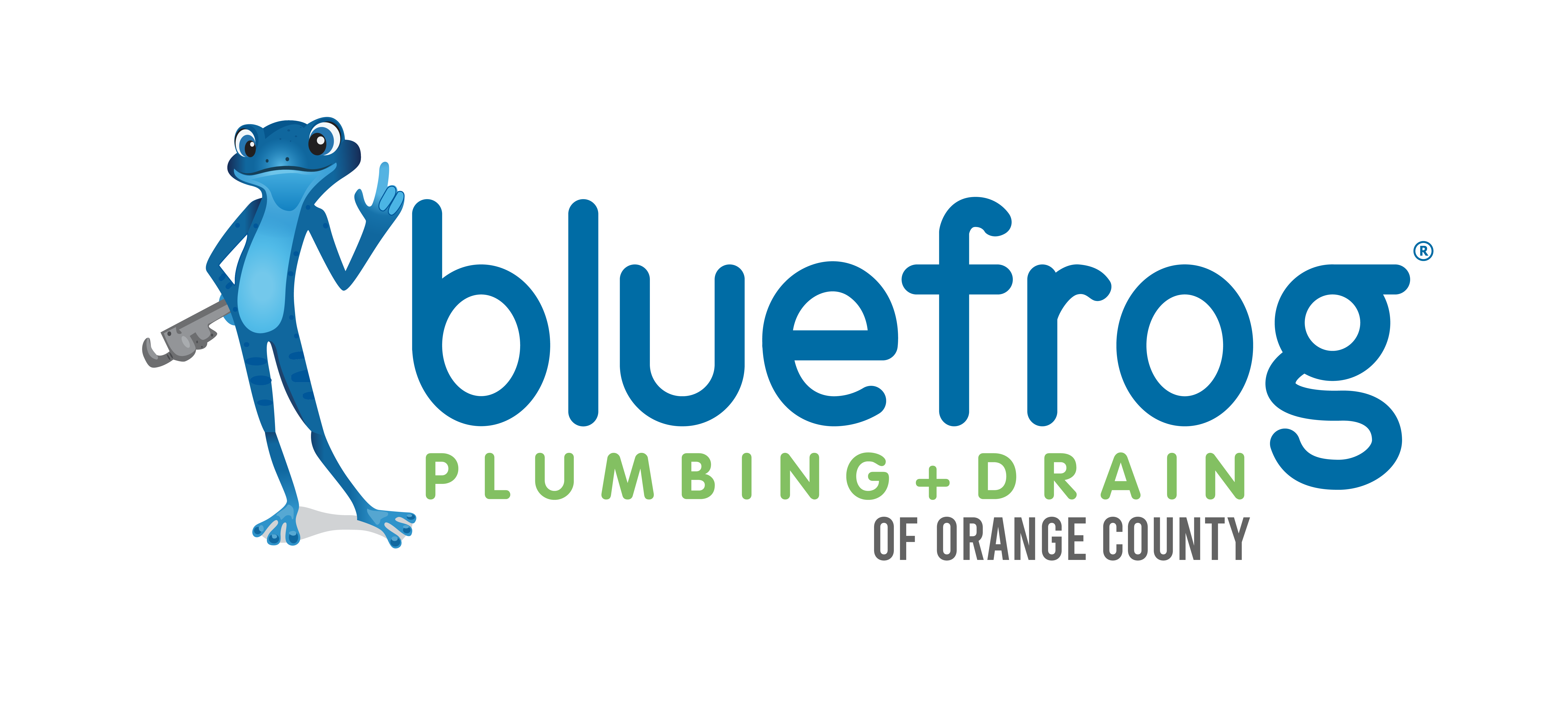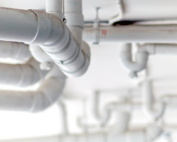Some plumbing issues announce themselves with a fury such as a drain backing up with sewage or a burst pipe, while others remain silent and destructive. In this article, we will reveal 3 signs of hidden plumbing issues that may be affecting your home and discuss some possible fixes for these problems.
Whole-Home Low Water Pressure
Water has an ideal range of 45-80 pounds per square inch when measured in a residential property. When pressure is normal, there is enough velocity in the water to service your appliances and plumbing fixtures with ease. When this pressure range is violated and the pressure falls below the normal range there is cause to be concerned. Not only is low water pressure an annoyance causing the time to complete normal household activities to increase, but low water pressure can be a red flag that you have an unidentified plumbing problem. There are several reasons why you might experience whole-home low pressure.
Municipal Water Source Issues
Water is typically supplied to homeowners through a municipal water supplier. If water is entering your home at a low pressure it may be the result of repair work being done by the city or some other system-related activity that is draining the pressure. A call to your neighbor will verify this suspicion since they too will be experiencing low pressure as they are supplied from the same water supply source.
Water Meter And Valves
After your water is released by the city, it will enter your property and pass through a water meter. The meter is designed to record usage for billing purposes through your utility. If the meter control valve is partially shut it will restrict the flow of water and you will experience low pressure.
There is also a main shutoff valve located in every residence that controls the flow of water coming into your home. When a plumbing emergency crops up, the shutoff valve is where you need to run to put a stop to the flow of water and limit the amount of flooding to your home. A burst pipe or a leak behind a wall will drain your water supply leaving behind low pressure.
Water Heater
Over time your water heater can be affected by hard water minerals that attack and destroy your pipes, storage tank lining, and interior components. As corrosion builds inside plumbing pipes connected to the heater, the interior space narrows, and water passage is restricted forcing the water to lose velocity. Sediment can also collect on the floor of the tank resulting in decreased heating and energy efficiency and lower pressures.
Discolored Water
Discolored or cloudy water is unpleasant to use and can be dangerous to your health. It can also be an indication that something is happening within your plumbing that requires attention. Here are a few common causes of discolored water and how it affects your plumbing system.
Pipe Material
Certain pipe materials can chemically react with your water to cause discoloration. Cast iron piping is prone to corrosion and passing water inside the pipe can dislodge rust and other particles and cause your water to change color.
Copper pipes, even newly installed ones, can turn water green. Copper in water is not necessarily problematic but when high levels are detected it becomes a dangerous health hazard.
Galvanized steel pipes, found mostly in homes built before 1960, were popular due to their zinc lining which was intended to protect the pipe from rusting and corroding. Unfortunately, the zinc lining contained lead and cadmium, two heavy metals that caused the water to become unsafe to drink. In addition, the zinc lining failed, creating rusting pipe interiors that tainted and discolored the water.
Unwanted Particles
In addition to corrosive particles and rust from certain pipe materials, additional particles can find their way into plumbing pipes. As rubber components such as gaskets and O-rings deteriorate the rubber disintegrates, leaving behind tiny particles and causing the water to appear blackish.
Discolored hot water can easily be traced back to your water heater. As sediment begins to collect on the floor of the storage tank, it eventually will be dispersed into the drinking water causing it to become brown. A flushing of your tank will be needed to remove this sediment and restore water quality.
Waterborne Germs
Waterborne germs can grow and quickly multiply inside plumbing pipes, especially plumbing pipes that are infrequently used. Not only can these germs lead to serious health-related issues but they can also form a slimy bacteria that will turn your water pink.
It is recommended you have your water tested for hardness, iron, manganese, and corrosion to combat the ill effects of waterborne germs and bacteria and to keep your plumbing system and water quality at its very best.
Slow-To-Empty Drains
Slow-draining sinks and tubs, especially when multiple fixtures are affected, can be a warning sign of hidden plumbing issues. Here we will discuss the possible causes of an affected drainage system.
Poor Kitchen Disposal
The kitchen drain probably is most affected due to poor disposal habits. Many homeowners believe, “If it fits in the drain it belongs in the drain” but this is not true. Grease, oils, and certain types of food waste can combine inside plumbing pipes to create stubborn blockages. It is important to practice precautionary disposal steps to protect your kitchen drain. This includes understanding your garbage disposal and honoring its capabilities.
Poor Bathroom Disposal
Clogs can easily form in these drains as well. Oily bath products like bath bombs, coat the lining of plumbing pipes causing them to have a sticky characteristic. Then, as hair follicles pass by they get stuck on the pipe interior creating issues. These types of clogs may seem to be just an annoyance when it takes extra time to drain the sink or tub but, in reality, these clogs can lead to serious plumbing problems.
Corrosion
Aging plumbing or plumbing not maintained properly will be a victim of pipe corrosion, a deterioration of a pipe either internally or externally. Internal corrosion is a result of hard water mineral buildup along with rust and other particles which slowly accumulate and eventually restrict the flow of water coming in or water trying to drain from your plumbing system.
Exterior corrosion results from a pipe’s relationship with certain soil types and fluctuating weather conditions. Repairing corroded pipes is an expensive and complicated procedure so avoiding them with yearly inspections is worthwhile. Corrosion leading to slow-to-empty drains is a good example of a seemingly small issue masking a much more serious problem.
Tree Roots
Similar to mineral accumulation, plumbing pipes can also become overrun by another condition- thirsty tree roots. Trees planted near your sewer line can seek moisture and nutrients through their root system and even the tiniest of cracks in the sewer line can be enough for roots to enter. Once they make their way in they quickly multiply, eventually blocking the sewer line causing sewage backups, fractured sewer lines, and even a completely collapsed pipe.
Looking For Help With Plumbing Issues?
We are the plumber you need to call when experiencing these silent signs of larger plumbing issues. Low water pressure, discolored water, and slow-to-empty drains can look to the untrained eye as minor inconveniences and not as potentially more serious plumbing problems that may be developing.
Call to arrange for a yearly plumbing inspection so that newly forming plumbing issues can be addressed promptly and further issues averted. We are licensed and insured plumbing experts with the knowledge and experience you need to keep your plumbing system in the best shape possible.

Slab Leaks: A True Plumbing Emergency
Home building following World War II was aggressive, so many houses were built on cement foundations to reduce the time it took to build them and to keep costs at a minimum. They were
How To Extend The Life Of Plumbing Pipes
A plumbing system consists of a complicated series of pipes, fixtures, and appliances that provide the infrastructure to run a well-functioning home. In this article, we will focus solely on plumbing pipes and ways
3 Silent Signs You Have A Plumbing Problem
Some plumbing issues announce themselves with a fury such as a drain backing up with sewage or a burst pipe, while others remain silent and destructive. In this article, we will reveal 3 signs



